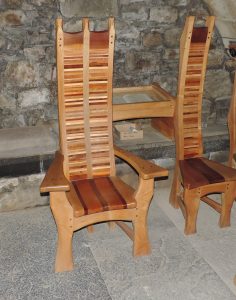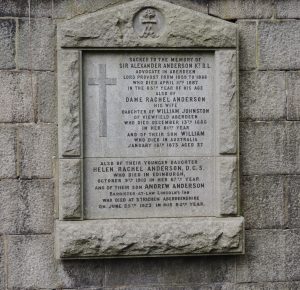A large quantity of human remains were uncovered during the archaeological excavation in 2006. Since then they have been the subject of a great deal of study and research, some of which is ongoing. However, the aim has always been to re-inter them within the building. This is easy to write but more difficult to do, not least because of the large volume the bones occupy. It is also important that wherever they are buried it is in a place where they will not be disturbed again. Our architect was asked to draw up plans for a crypt to be built below the floor level of the lowest level of the proposed 4-storey building within the shell of the former East Kirk, in other words below the lowest levels of the dig.
We were able to obtain funding from the Town Centre Fund, a Scottish Government initiative being administered locally by Aberdeen City Council and we are very grateful to them for this. Once all permissions were obtained the contract to build the crypt was signed with CHAP Construction of Westhill. Work was scheduled to start in March 2020 – just after the beginning of the first Covid-19 lockdown. Not surprisingly it had to be postponed, finally getting underway in September 2020.


The first and slowest part of the work was the excavation of the large hole required. This was about 25 feet long and 11 feet wide and went down about 7 feet. Special machinery was needed which required a new temporary ramp to be built to give access.


Once excavation was complete, the concrete base was made, then the walls were constructed and finally a wooden covering with access hatch and internal ladder was put in place. Work was completed in November. A number of photographs, mostly taken from the ‘viewing window’ off Drum’s Aisle, are included to show progress.


At present none of the bones have been returned to the crypt because they all require placing into special boxes before this can be done. That will take quite a long time to process. Eventually, however, it is intended that there will be a religious ceremony to mark the laying to rest of the remains once more.














